GLAUCOMA
 The American Glaucoma Society Subspecialty Day Lecture: The Future of Sensors in the Diagnosis and Monitoring of Glaucoma, presented by Marlene R. Moster, MD.
The American Glaucoma Society Subspecialty Day Lecture: The Future of Sensors in the Diagnosis and Monitoring of Glaucoma, presented by Marlene R. Moster, MD.
When: Saturday, 11:43 a.m.-12:13 p.m., during Glaucoma Subspecialty Day 2018.
Where: Room E354.
“The MIGS (minimally invasive glaucoma surgery) revolution is now playing a positive role in allowing us to treat glaucoma at earlier stages, as the surgery may afford less risk with acceptable efficacy. However, even with easier access to these miniature shunts or devices, it is still difficult to know what the patient’s pressure is at different times of the day. What happens to the intraocular pressure (IOP) at night, with exercise, and with different medications? One answer to this dilemma is to surgically place an intraocular sensor in the eye to monitor the IOP. This lecture will focus on the evolution of IOP monitoring and how sensors will affect the way we practice ophthalmology.”
Glaucoma Subspecialty Day 2018: A New Renaissance (Saturday, 8:00 a.m.-5:33 p.m.) is organized in conjunction with the American Glaucoma Society.
RETINA
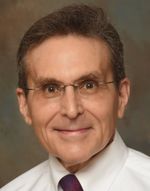 Jackson Memorial Lecture: Lessons Learned From Avastin and OCT: The Great, the Good, the Bad, and the Ugly, presented by Philip J. Rosenfeld, MD, PhD.
Jackson Memorial Lecture: Lessons Learned From Avastin and OCT: The Great, the Good, the Bad, and the Ugly, presented by Philip J. Rosenfeld, MD, PhD.
When: Sunday, 9:33-9:58 a.m., during the Opening Session.
Where: Room E354.
“Optical coherence tomography (OCT) and anti-VEGF therapy have been great, revolutionary developments for diagnosing and managing neovascular and exudative eye diseases, particularly for age-related macular degeneration. During the introduction and evolution of these imaging and treatment strategies, many good, admirable individuals and organizations contributed to the overall acceptance and success of these technologies. At the same time, other individuals attempted to block access to Avastin and prevent its widespread use in the United States and abroad. Even when the situation grew ugly, our profession and government preserved access to this low-cost, effective therapy that has prevented blindness worldwide. Together, OCT and Avastin have saved Medicare and patients over $50 billion since 2006.”
Opening Session (8:30-10:00 a.m.).
CORNEA
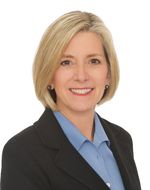
Whitney G. Sampson Lecture: Rethinking Fuchs Dystrophy in the Era of Successful Descemet Stripping, presented by Kathryn A. Colby, MD, PhD.
When: Sunday, 11:18-11:43 a.m., during Sym12, Hot Topics of the Ocular Surface.
Where: Room S406a.
“Fuchs endothelial corneal dystrophy (FECD) is the most common indication for corneal transplantation, and it affects up to 4% of ophthalmology patients in the United States. First described over 100 years ago, FECD remains an enigmatic disease. The revolution in surgical treatment of FECD over the past 15 years, including the recent demonstration that Descemet stripping only (DSO) can be used as a treatment in certain FECD patients, has led to renewed interest in this common corneal condition. This talk will present a framework to tease apart the cause(s) of FECD, as well as review the current state of endothelial keratoplasty and DSO, and look at the future for nongraft therapies.”
Hot Topics of the Ocular Surface (10:15-11:45 a.m.) is cosponsored by the Contact Lens Association of Ophthalmologists and the Eye and Contact Lens Association.
REFRACTIVE SURGERY
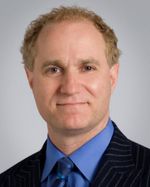 Barraquer Lecture: Lenticular Implantation and Refractive Eye Banking as a New Frontier in Refractive Surgery, presented by Ronald R. Krueger, MD.
Barraquer Lecture: Lenticular Implantation and Refractive Eye Banking as a New Frontier in Refractive Surgery, presented by Ronald R. Krueger, MD.
When: Sunday, 11:23-11:43 a.m., during Sym 25, The Era of Femtosecond Lasers.
Where: Room E450.
“Jose I. Barraquer, MD, is known as the father of modern-day refractive surgery. Dr. Barraquer’s earliest procedures and his first publication in 1949 involved refractive keratoplasty as a tissue addition approach. “The advent of small-incision lenticular extraction (SMILE) over the past 9-10 years has reintroduced the possibility of tissue addition in refractive surgery by reimplanting the precision laser-shaped lenticules that are extracted. So far, lenticular implantation has been proposed for the correction of hyperopia, presbyopia, and keratoconus.
“Reimplanting SMILE lenticules into a pocket (in femtosecond intrastromal lenticular implantation) or mechanically-shaped donor lenticules under a flap (in lenticular implantation keratoplasty) offers correction of higher hyperopia with greater stability and natural asphericity than the tissue subtraction in hyperopic LASIK. Central implantation of small, 1- to 3-mm–diameter alloplastic lenticules, shaped with a femtosecond laser (in PrEsbyopic Allogenic Refractive Lenticule, or PEARL) or with an excimer laser (by Allotex), offers a safer, more biocompatible solution to presbyopia than the synthetic implantation of corneal inlays. Sutureless lenticular implantation in keratoconus offers the possibility of enhancing the biomechanical instability and irregular refractive shape of keratoconus in a manner safer than penetrating keratoplasty and quicker than deep anterior lamellar keratoplasty. With each of these indications, the well-regulated environment of an eye bank offers surgeons safe and reliable access to refractive-shaped lenticules, creating not only a new frontier in refractive surgery but also an exciting new dimension in the area of refractive eye banking.”
The Era of Femtosecond Lasers (10:15-11:45 a.m.) is cosponsored by the International Society of Refractive Surgery.
OCULOPLASTICS/PROSTHETICS
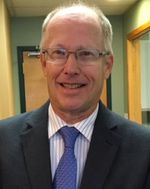 Ruedemann Lecture: Choosing the Ideal Implant Size, an Ocularist’s Perspective, presented by Joseph A. LeGrand Jr., BCO.
Ruedemann Lecture: Choosing the Ideal Implant Size, an Ocularist’s Perspective, presented by Joseph A. LeGrand Jr., BCO.
When: Sunday, 11:29-11:44 a.m., during Sym11, Moving Target: Advances in Prosthetic Eyes and Motility.
Where: Room E350.
“I have seen a trend toward bigger implants being used for enucleation and evisceration surgery. This is a positive development, as larger implants help to reduce problems of superior sulcus depression and enophthahlmos. However, very large implants can also create fitting and fabrication challenges for the ocularist. In a survey, members of the American Society of Ocularists were asked, ‘What is the ideal thickness of a prosthetic eye?’ The results indicate a wide range of preferences. I will discuss implant size from an ocularist’s perspective.”
Moving Target: Advances in Prosthetic Eyes and Motility (10:15-11:45 a.m.) is cosponsored by the American Society of Ocularists.
UVEITIS AND IMMUNOLOGY
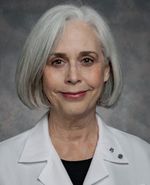 C. Stephen and Frances Foster Lecture on Uveitis and Immunology: The Eye Fights Back: Immune Defense in a Dangerous World, presented by Janet L. Davis, MD.
C. Stephen and Frances Foster Lecture on Uveitis and Immunology: The Eye Fights Back: Immune Defense in a Dangerous World, presented by Janet L. Davis, MD.
When: Sunday, 12:50-1:45 p.m., during Sym15, C. Stephen and Frances Foster Lecture on Uveitis and Immunology.
Where: Room S406a.
“Uveitis is usually categorized as being due to either infection or autoimmunity. The reality is more complicated than that. The immune defenses of the eye are not only highly regulated but also highly responsive to any perceived threat, including both endogenous and exogenous antigens. Regaining the null point of no inflammation requires a better understanding of both the inciting event and immune mechanisms. We see uveitis as a bad thing, but the immune system is often just doing its job. Modulating and ultimately stopping destructive processes, whether infectious, autoinflammatory, or autoimmune in etiology, is the key to preserving sight.”
C. Stephen and Frances Foster Lecture on Uveitis and Immunology (12:45-1:45 p.m.).
GLAUCOMA
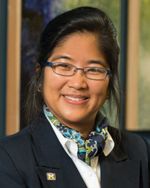 Robert N. Shaffer Lecture: At the Technological Confluence of Glaucoma Clinical Care and Research, presented by Sayoko E. Moroi, MD, PhD.
Robert N. Shaffer Lecture: At the Technological Confluence of Glaucoma Clinical Care and Research, presented by Sayoko E. Moroi, MD, PhD.
When: Sunday, 3:01-3:26 p.m., during Sym19, Practical Guides to the Dilemma of Managing Cataract in Glaucoma Patients.
Where: Room E450.
“We are amidst a confluence of great advances in knowledge about clinical risk factors, glaucoma genes, new drugs, novel surgical approaches, biological pathways, biomechanics, augmented reality for vision and visual field testing, data science analytics, and population health. Currently, glaucoma management is predominantly an event-based endeavor. However, under this approach, some patients progress to blindness. In order to change glaucoma care from event-based management to precision-based prevention of glaucoma-related blindness, we need to overcome barriers; in order to embrace precision-based prevention of glaucoma-related blindness, we need to identify and validate biomarkers.”
Practical Guides to the Dilemma of Managing Cataract in Glaucoma Patients (2:00-3:30 p.m.) is cosponsored by Prevent Blindness.
OCULOPLASTICS
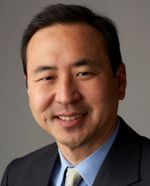 Wendell L. Hughes Lecture: The Evolution and Revolution of Oculofacial Plastic Surgery, presented by Don O. Kikkawa, MD.
Wendell L. Hughes Lecture: The Evolution and Revolution of Oculofacial Plastic Surgery, presented by Don O. Kikkawa, MD.
When: Sunday, 4:48-5:10 p.m., during Sym24, The Nuances of the Lower Eyelid and How to Treat Malposition.
Where: Grand Ballroom S100c.
“Oculofacial plastic surgery is a specialty in its infancy. The field evolved out of need for reconstructive surgeons trained to protect sight and knowledgeable about the intricate structure and function of the surrounding regions of the orbit and face. Within the last decade, there have been revolutionary advances placing oculofacial plastic surgery at the forefront of precision medicine. This lecture will highlight recent advances and historical perspectives.”
The Nuances of the Lower Eyelid and How to Treat Malposition (3:45-5:15 p.m.) is cosponsored by the American Society of Ophthalmic Plastic and Reconstructive Surgery.
Next story from AAO 2018—After CyPass Withdrawal: What Now?: Thomas W. Samuelson, MD, talks about where we are now with the CyPass stent.